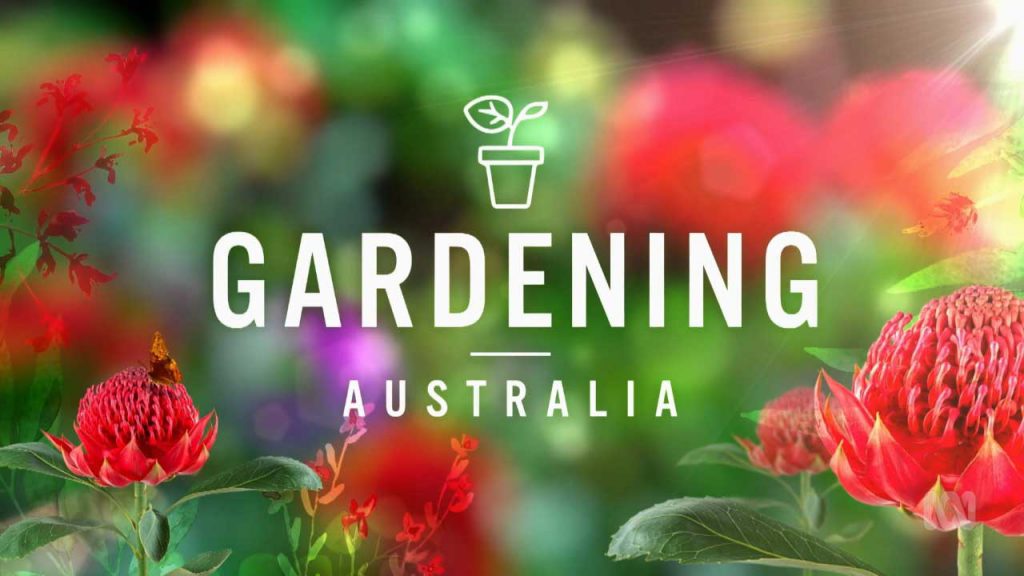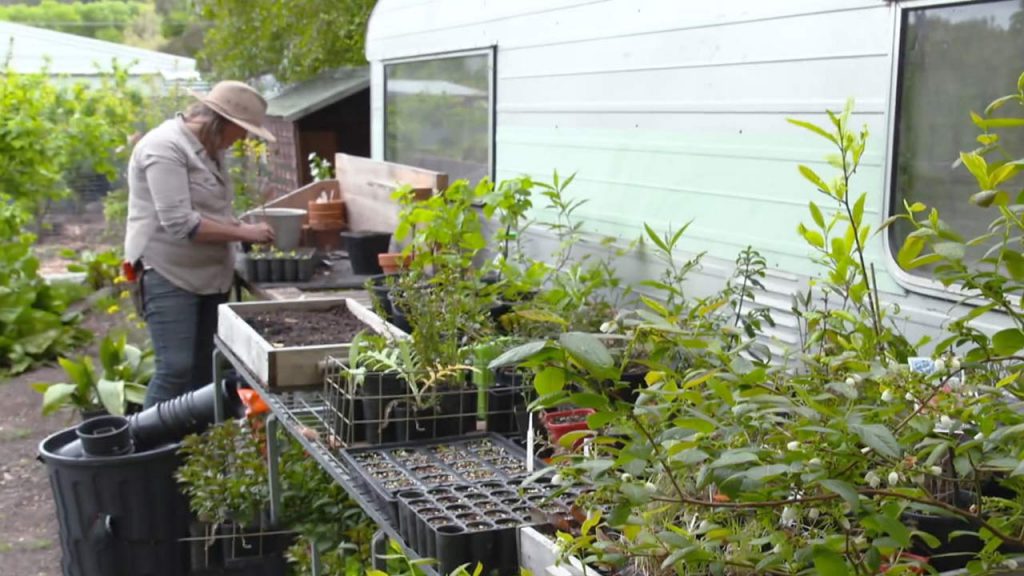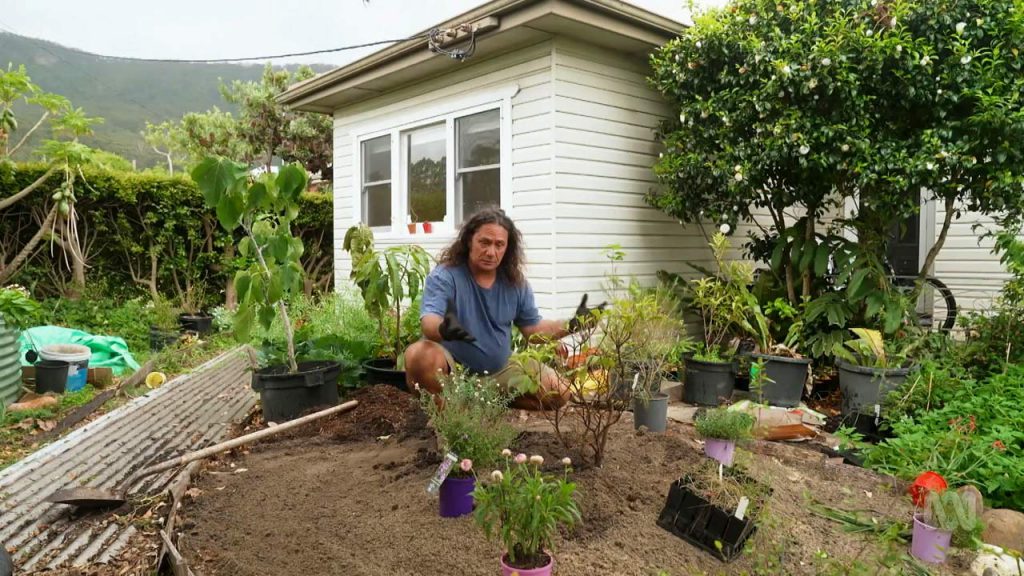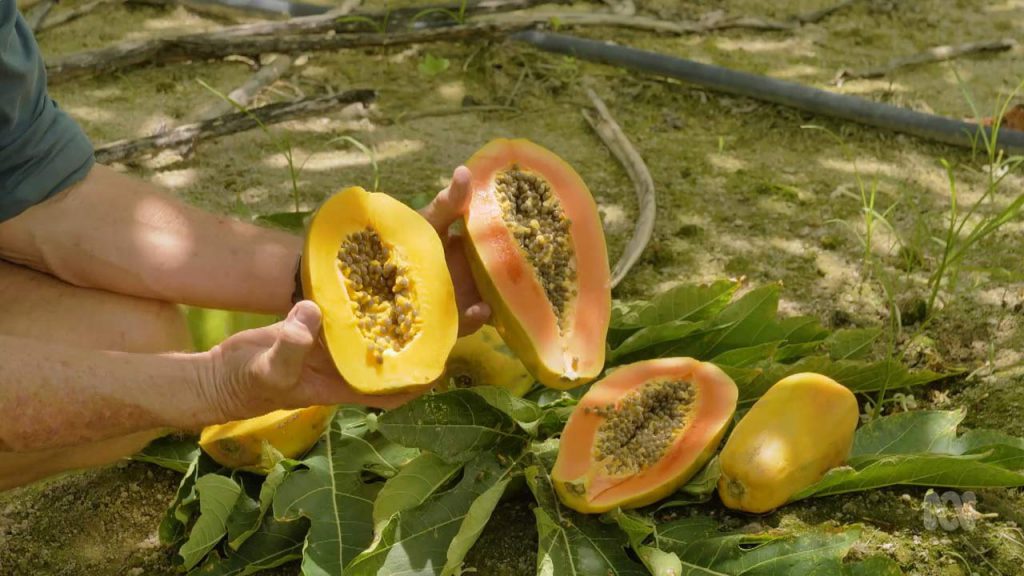Gardening Australia episode 20 2022: Costa visits a laneway transformed by love and plants; Tammy meets home hydroponic growers; Tino resets the vegie garden for spring; Sophie dives into soil science; Millie visits guitar makers transforming salvaged timber.
Inspiring, entertaining and full of practical advice, join Costa Georgiadis and the team as they unearth gardening ideas, meet avid gardeners and look at some of the most inspiring gardens from across the country.
Gardening Australia episode 20 2022
Laneway Love
Costa meets a couple who have transformed a once disused urban laneway into a green oasis brightening the doorsteps of their neighbours, and connections with the wider community. The laneway has been transformed by Sebastian Vasquez and Mike Heenan, who have lived on or near the Lane in Darlinghurst, for more than 20 years. For most of that time it had been a dumping ground for household goods and rubbish, but during COVID they decided to do something about it. During lockdown, like many people, they went on more neighbourhood walks, and discovered some small laneways where residents had put pot plants. “We noticed the lanes that were looked after didn’t have litter or illegal dumping,” Sebastian says, “I said to Mike, why don’t we just fill the lane with plants and see what happens.”
Sebastian posted a request for donated plants on the neighbourhood Facebook page “I said give us the pots you don’t want, and your half dead plants, we’ll bring them back to life!” They even dug a few donated plants out of the ground. Sebastian says social media has been a big part of the lane’s success. “At the beginning we weren’t selective – we took anything that was green!” “Now we look for variety.” “Lots of the donations were indoor plants,” but that doesn’t mean they can’t go outside. “We have shady spots they can thrive in.”
House of Hydro
Tammy meets a couple who have turned their home into a high-tech hydroponic jungle, where they combine their horticultural passions to create stunning new Anthurium hybrids. We often think that gardening needs to involve good soil, compost, and lots of sunlight but there are less traditional methods growing in popularity.
Alicia Qian and Nigel Rannard met through their love of plants and have since created a home and business centred on growing wild and wonderful tropical plants powered by hydroponic systems. Alicia’s background in science and research combined with Nigel’s engineering experience allowed them to turn their large collection and hobby into a full-time job.
Their customers are “avid collectors from around Australia who are really interested in the quirky, or the collectible, unique kind of hybrids that we create, and they in turn share with us.” It’s a collaborative system, with growers and hobbyists all exchanging their plants and experience growing particular cultivars and hybrids.
Alicia says, “many species suit hydroponics but particularly a lot of the aroids we grow come from jungles where they’re epiphytes and so they’re growing on bark naturally without needing soil.” And Nigel’s ‘flood and drain’ hydroponic set up “can mimic the occurrence of a very strong wet and dry cycle.”
Top Tip: Biodiversity
Clarence shares plants to encourage wildlife in your backyard. Biodiverse environments are incredibly important to all of us. Protecting the richness of our living world and support systems that sustain us is crucial. We as humans have taken a lot of land that once belonged to native species. There is a lot that we can do in our own gardens to share space and support local ecosystems.
Take a look around the bush to see what is growing and how. Start with things like Lomandra longifolia. The flower and seed heads provide food and habitat, a safe place for small birds, insects, and lizards. Moving on to the acacias, there are lots of different wattles right across the country. With 800 or so species, there is bound to be one for your garden. They flower at different times of the year, and often when there are no other flowers available, so they are great for butterflies and insects that have nothing else to eat during winter.
Spring Into Spring
Tino shares his tips to prepare the vegie patch for a bumper spring and summer; with some simple tasks that will prevent pests, minimise weeds, and enrich the soil for harvests ahead.
Rake up leaves and dirt that has built up around the vegie patch to help discourage pests and diseases and create a nice clean space to work in. Chuck it all in the compost.
Weeds still grow in the cold and can be a useful cover crop when not much else is growing. It’s important to keep on top of them though around your winter dormant plants such as asparagus and rhubarb, as they can cause root competition and disturb the crowns. It’s a good time to remove them before planting new crops too.
It’s vital that the soil is in good shape, ready for new crops to be planted. Check the soil pH by using a test kit. Close to neutral (a pH of 7) is perfect for most vegies. If it’s on the acidic side, fork in some lime 2 weeks before planting. Next rake back mulch and loosen up the soil, which is especially important for root crops. Then add lots of compost, aged manure or blood and bone and lay mulch on top. It’s feeding time for perennials too. As rhubarb starts to sprout it’s the perfect time for a feed. Tino applies a large helping of blood and bone around the plant, covered with a layer of compost.
Home Soil Science
Sophie heads to the home of a soil scientist who advocates for understanding this critical foundation of any garden; and brings some of her own garden soil to put it to the test!
Sophie is at the home garden of soil scientist Emily Leyden. Emily got interested in soil science partly because she’s a keen gardener. Her work in academia usually finds her working with farmers and agricultural companies on how they can improve their practices, and environmental agencies work on erosion and salinity. But her real passion is the extension work as the South Australian President of Soil Science Australia, helping home gardeners to understand the scientific underpinnings of what makes a good soil, and therefore a good garden.
Why is soil Emily’s passion? “Soils feed the world. 99% of what we eat relies on it, plus the fibre we use to clothe ourselves. People don’t think about the science because we can’t see it, but under our feet is a whole world. The best thing a gardener can do is understand their soil.”
The proof is in the pudding. Starting with a blank slate, Emily has built an impressive garden across the 500sqm twin block in Adelaide’s inner north. There’s cottage perennial plantings, vegie beds, close to 20 fruit trees and even a paved pear arbour.




